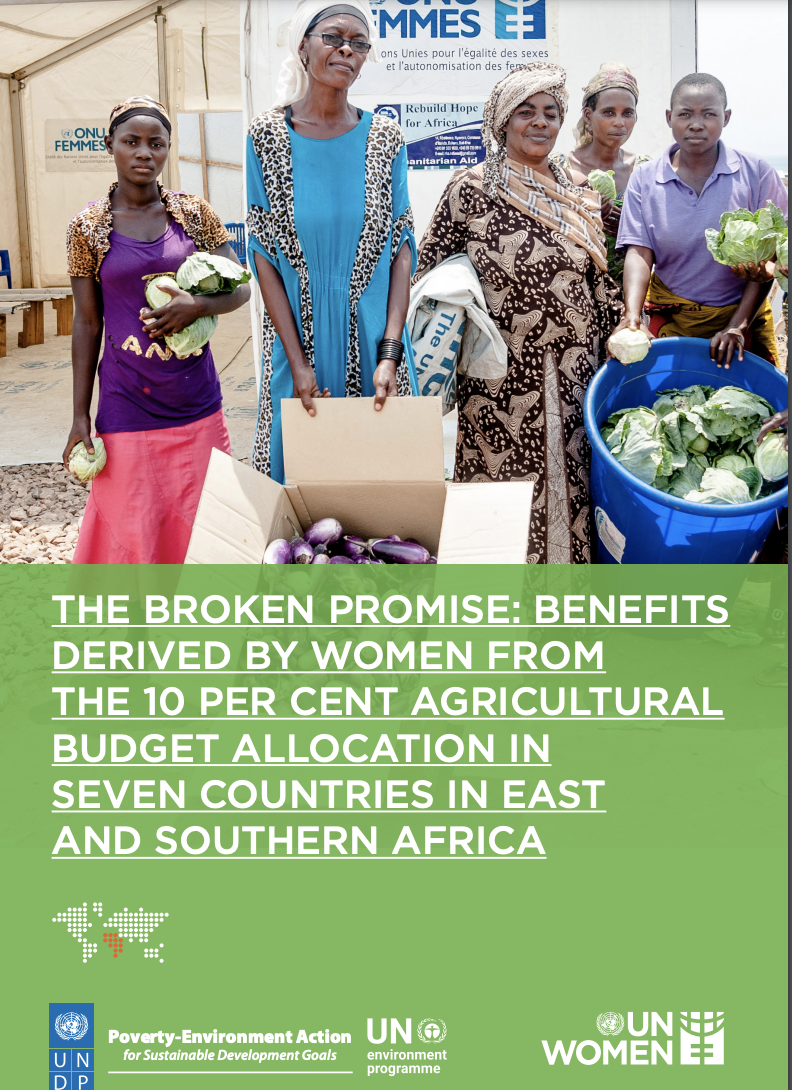
The Broken Promise: Benefits derived by women from the 10 percent agricultural budget allocation in seven countries in East and Southern Africa

Women in Eastern and Southern Africa form 60 percent of the population that is dependent on agriculture for their own and their families’ livelihoods. It is increasingly acknowledged that agriculture on the continent cannot develop without taking into account the role of women and how they engage and benefit from the public resources at national level. Past efforts aimed at closing the gender gap at both international level and African Union member state level have had mixed outcomes, but they have not fully realized the role of women in economic development. The African Union Commission (AUC) adopted the Maputo Declaration (2003), which was to be implemented through the Comprehensive Africa Agriculture Development Programme (CAADP)(2003) and was reiterated in the Malabo Declaration. African governments committed themselves to allocating at least 10 percent of their national budgets to agriculture to achieve annual growth of 6 percent in the agricultural sector. However, since the signing of the Maputo Declaration (2003) and the subsequent implementation of the policy framework at national level through the National Agriculture Investment Plans (NAIPs), very few countries have attained or surpassed the 10 percent threshold.The aim of the study was to carry out an in-depth analysis of whether or not the budget allocation to the agricultural sector took into account the needs of women smallholder farmers and whether or not this allocation had had an impact on their socioeconomic development, thus closing the gender gap in agriculture.